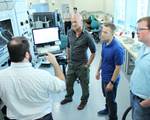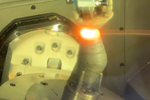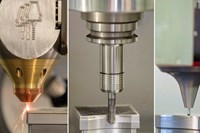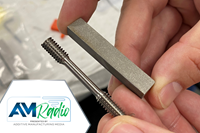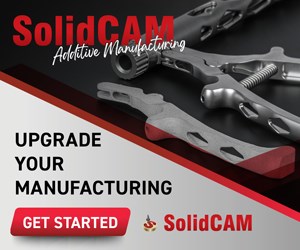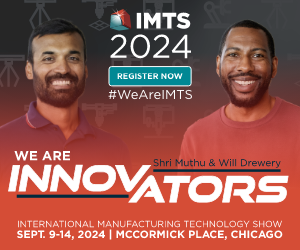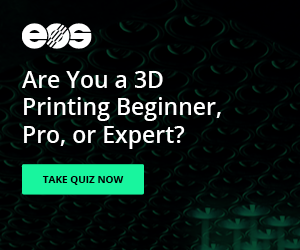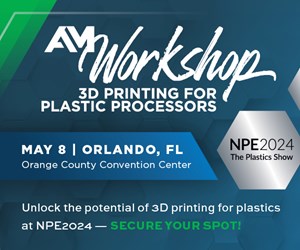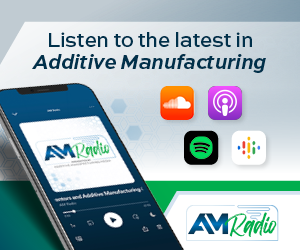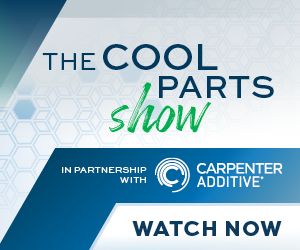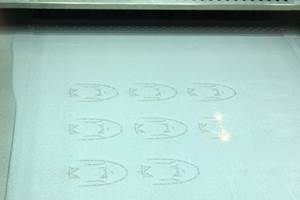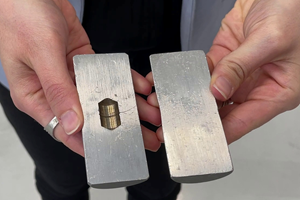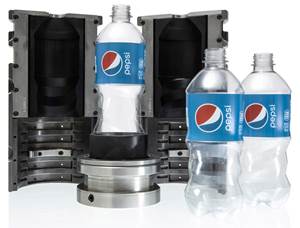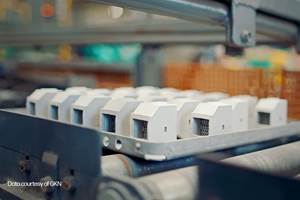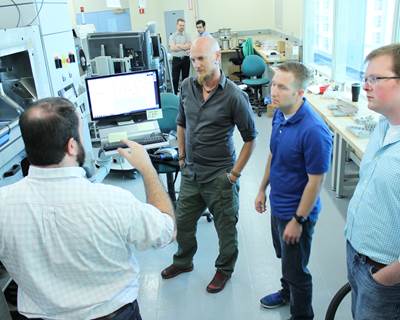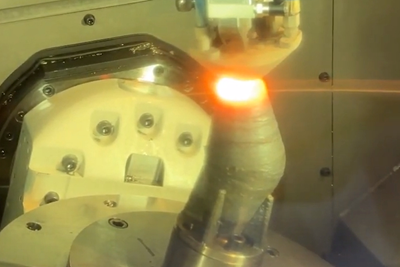Easing into AM
A layered approach to learning the technology behind additive manufacturing (AM) will help lessen the headaches.
Share
Read Next
So are you ready to take the plunge into additive manufacturing and start making complex, lightweight parts with incredible strength-to-weight ratios, or consolidated assemblies that minimize part count and provide superior functionality? Not so fast. AM is a lot harder than it might look, and diving into it headfirst can create more work and headache than benefit. I suggest easing your company into AM through “layered learning.”
Design Aids
The early days of AM were all about 3D printing design aids: prototypes, concept models and other visual examples that support product design and development. While many shops have moved on from this use of the technology, there are two key takeaways from using AM in this way: users become familiar with AM workflow, and they start to realize the limitations of AM processes. The former is helpful because this workflow—CAD, creating STL files, determining build orientation, slicing, toolpath planning—is necessary for every level of additive manufacturing; the design tools and level of detail just get more sophisticated as one progresses into more advanced AM use. And insight into some of the limitations of AM, such as layer height, overhang angles, thin walls, part warping and more, will continue to be useful in the more advanced stages of AM, beyond 3D printing with polymers.
Production Aids
Designing and printing production aids—jigs, fixtures and tooling—is the next “layer” of AM learning. This may be one of the least interesting applications of the technology, but it is probably the quickest way for a shop to realize a positive return on its investment in any additive system. For instance, a small, desktop 3D printer can easily pay for itself in one to three months if it is used to 3D-print fixtures and jigs that save time, increase efficiency and avoid other costs. The workflow is the same as that required for printing design aids, but it further challenges the user to think more creatively, a critical step for successful transition to more advanced AM.
Early successes will also help increase buy-in from others in the company, and may even be a way for shops to start saving for larger, more expensive AM systems.
Production aids will likely start out as direct replacements for existing jigs and fixtures, but eventually users will start designing more sophisticated and intricate tooling. Using AM for this purpose helps users build their confidence, get more comfortable working with the technology, and understand its pros and cons. Early successes will also help increase buy-in from others in the company, and may even be a way for shops to start saving for larger, more expensive AM systems. For example, a portion of the efficiency gains and/or cost savings could be directed to an AM “savings account” to support system upgrades or new AM technology purchases.
Part Production
After users have mastered the workflow, gained insight into AM’s process limitations and improved their creative confidence, they will be ready to start transitioning from polymer to metal AM systems and to shift into producing end-use parts. As with the printing of production aids, this will likely start with substitution of additively made parts for parts made by conventional production methods, which will allow companies to make apples-to-apples comparisons between those parts. Users will quickly realize that postprocessing AM parts (support removal, stress relief, heat treatment, hot isostatic pressing and finish machining, for example) will make them more costly to produce than the same parts with traditional manufacturing processes. At this point, users may start doubting their decision to move into AM. They need to keep in mind that subtractively manufactured parts were not designed for additive manufacture, and therefore direct replacement of a conventionally made part with an AM part is not likely to yield any cost benefits. In fact, as mentioned, it will likely be more expensive. In many cases, however, the part can be made faster through AM and/or require less tooling. That is main value proposition for additive manufacturing at this stage, and the economics become clearer to users as they shift into production with AM.
Design for AM
As much as users might love to jump directly to this most advanced stage of AM, layering the learning from the earlier stages is critical to success here. Knowing the workflow and economics of AM, combined with its process limitations and postprocessing challenges, provides the necessary insights for creative users to identify innovations that can only be enabled by AM. It is at this stage that generative design, lattice structures, topology optimization, internal and conformal cooling, and other sophisticated design tools can be exploited to their fullest to create superior-performing parts, consolidated assemblies and functionally graded materials. These AM innovations may be so revolutionary that they lead to disruptions in a company’s supply chain or other business units, which might create new opportunities for AM innovation. This is the beginning of a virtuous cycle that revolves around, and is enabled by, AM, and it is the reason why people are so excited about additive manufacturing.
But, take your time, keep learning, and eventually you will stack all the layers and become an expert in additive manufacturing who can utilize the full potential of the technology.
This article originally appeared in Additive Insights, a monthly column in Modern Machine Shop magazine.
Related Content
What is Powder Bed Fusion 3D Printing?
Whether in metal or polymer, with a laser or an electron beam, powder bed fusion (PBF) is one of the most widely used 3D printing techniques.
Read MoreAM 101: What Is Hot Isostatic Pressing (HIP)? (Includes Video)
Hot isostatic pressing has long been used for metal castings, but is now being applied as a valuable method for closing porosity in metal 3D printed parts.
Read MoreHow to Build 10,000+ Shot Molds in Hours
Rapid tooling isn’t so rapid when it takes days to 3D print a metal mold, and then you still must machine it to reach the necessary tolerances. With Nexa3D’s polymer process you can print a mold in hours that is prototype or production ready and can last for more than 10,000 shots.
Read MoreUnderstanding HP's Metal Jet: Beyond Part Geometry, Now It's About Modularity, Automation and Scale
Since introducing its metal binder jetting platform at IMTS in 2018, HP has made significant strides to commercialize the technology as a serial production solution. We got an early preview of the just-announced Metal Jet S100.
Read MoreRead Next
4 Ways the Education and Training Challenge Is Different for Additive Manufacturing
The advance of additive manufacturing means we need more professionals educated in AM technology.
Read MoreAt General Atomics, Do Unmanned Aerial Systems Reveal the Future of Aircraft Manufacturing?
The maker of the Predator and SkyGuardian remote aircraft can implement additive manufacturing more rapidly and widely than the makers of other types of planes. The role of 3D printing in current and future UAS components hints at how far AM can go to save cost and time in aircraft production and design.
Read MoreHybrid Additive Manufacturing Machine Tools Continue to Make Gains (Includes Video)
The hybrid machine tool is an idea that continues to advance. Two important developments of recent years expand the possibilities for this platform.
Read More

